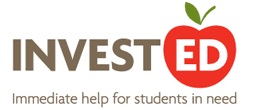![]() At 5:06 am on Sunday, September 18, 2011, it was raining cats and dogs in Seattle. It was pitch black and, although not cold per se, it wasn’t balmy. Along with 404 others, I decided it was a mighty fine day for a triathlon.
At 5:06 am on Sunday, September 18, 2011, it was raining cats and dogs in Seattle. It was pitch black and, although not cold per se, it wasn’t balmy. Along with 404 others, I decided it was a mighty fine day for a triathlon.
Fast forward to 9:54 am. I am huffing and puffing my way to the finishing line. I hear music. I hear my family cheering me on. And I hear a voice announcing my name as I cross the line. (Woohoooo!!!)
There was only one glitch: it was a man who announced my red-faced lunge across the line.
Don’t get me wrong: I like men. I’ve got a great husband, an adorable son, and a fantastic dad, all of whom were there cheering me on.
The glitch was that this was the Trek Women Triathlon series. As Sally Edwards (who is an amazing, iconic and completely and totally inspiring woman) says, the events are meant to help women find their “inner athlete”.
So I was kinda expecting a female voice to be cheering me on in that final, give-it-all-you-got, lunge-for-the-finish-line moment. Why? Because the Trek Women (and Danskin Women) Triathlon brands are all about the ladies.
The lovely gentleman who was kind enough to make me feel like a rock star even though I looked like I needed an oxygen tank would be a dream announcer at most any other triathlon. But at this event, it was out of sync with a brand based on the belief that all women can use athletic goals as a way to achieve their life goals.
I’d recommend the Trek and Danskin Women Triathlons to any woman who wants to find her inner athlete. And I hope that when you cross that finish line–and cross it you will!–one of your triathlon soul sisters is rocking the mic and cheering you on to glory.


